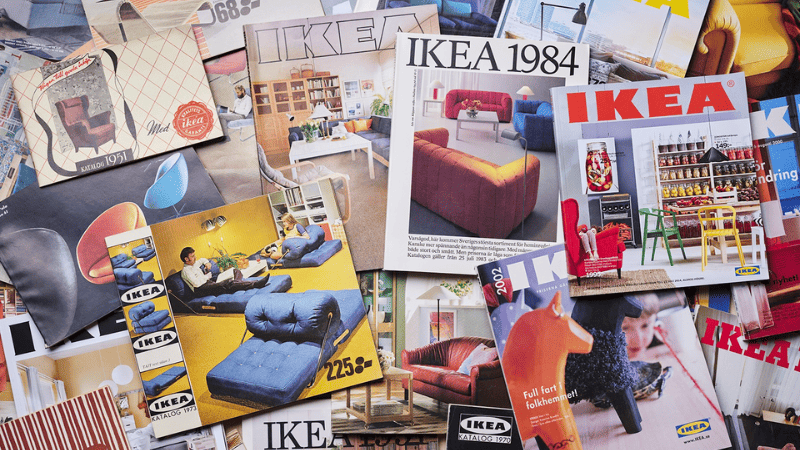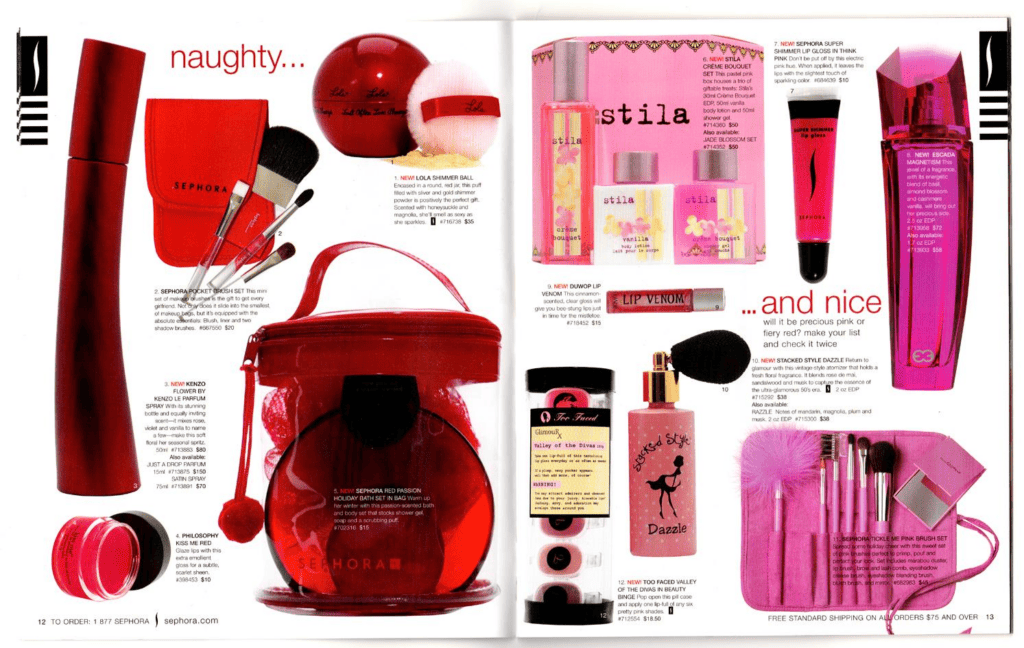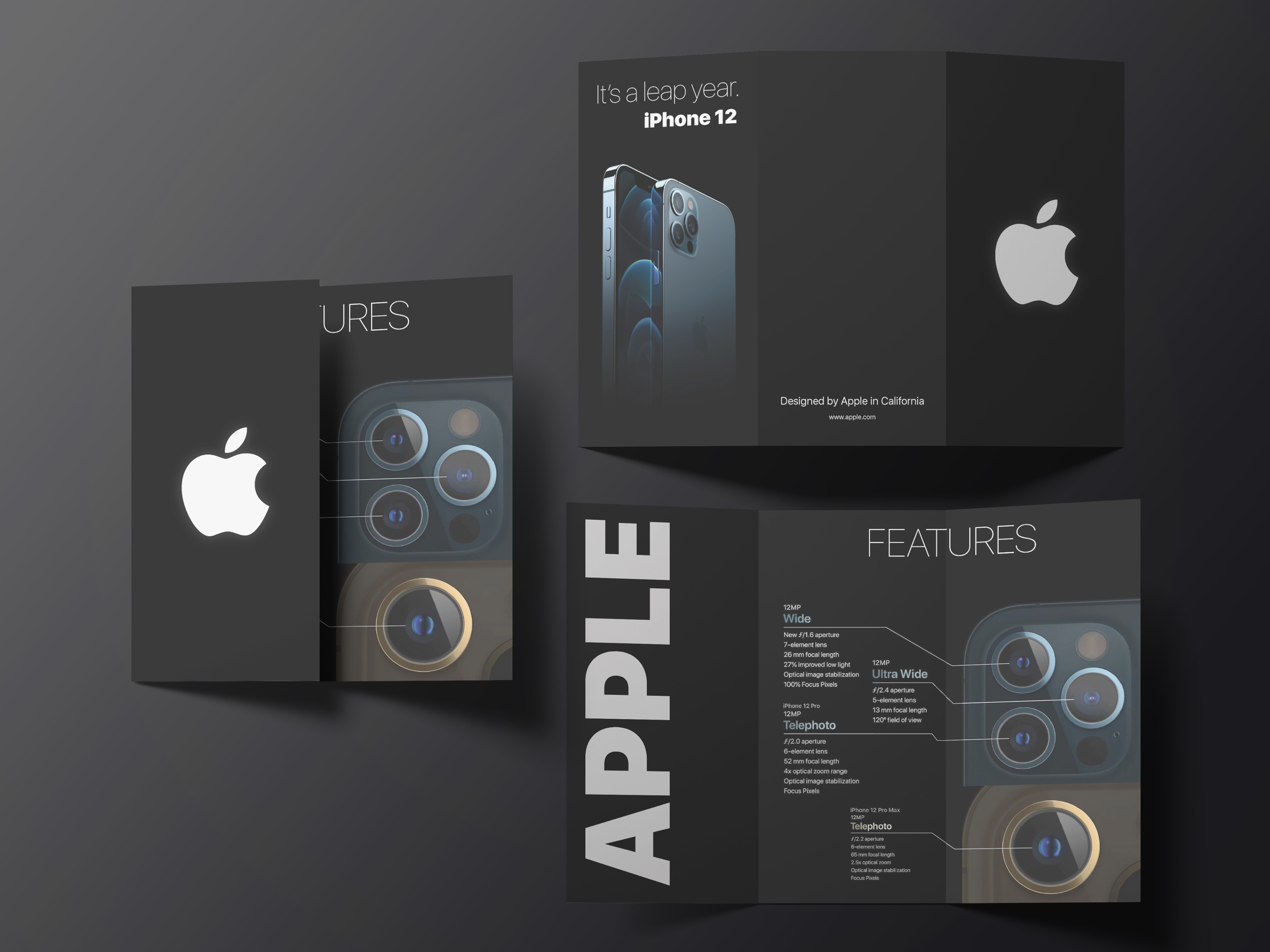Last Updated on December 26, 2023 by Packoi Team
Welcome to the vibrant world of product catalogs—a visual feast that beckons customers and tells the story of your brand’s offerings! A product catalog is more than a mere collection of images and descriptions; it’s your brand’s portfolio. A showcase of your company’s finest creations, meticulously curated to captivate and convert.

In today’s bustling marketplace, where attention is the ultimate currency, a well-crafted catalog serves as your brand’s emissary, effortlessly reaching potential customers far and wide. It’s your brand’s front-row seat in the digital marketplace, an immersive experience that beckons customers to explore, engage, and eventually make a purchase.
Product catalogs aren’t just about displaying goods; they’re about creating an emotional connection with your audience, enhancing brand recognition, and ultimately, driving sales.
In this comprehensive guide, we’ll unravel the art of creating a winning product catalog—an often underestimated but essential asset for businesses of all shapes and sizes. From its foundational importance as a showcase of your brand’s finest to its role as a silent yet powerful sales force, we’re here to illuminate the path to catalog success!
Ready? Let’s dive right in!
What Is a Product Catalog?
Imagine stepping into a world where every page or click is an invitation to explore, experience, and eventually acquire. That’s the allure of a well-crafted product catalog—a strategic blend of visual appeal, information, and persuasion.
Take a brand like IKEA – their product catalog is more than a mere list of examples of furniture. It’s an immersive journey through elegantly designed rooms, showcasing not just products but the lifestyle they promise. Each page tells a story, offering people a glimpse into how their homes could transform with the company’s products.

In the fashion world, catalogs are veritable storybooks. Take Anthropologie, for instance, their catalogs aren’t just about clothes; they’re about lifestyle. Vibrant, lifestyle-driven imagery paired with vivid descriptions transport you into a world where their products are part of an aspirational lifestyle.
A product catalog is the bridge between a brand’s offerings and a customer’s desires. It’s about creating an experience—an emotional connection that goes beyond the transactional. These catalogs are an artful blend of marketing prowess and consumer psychology, showcasing products in a way that transforms them from mere items on a list to coveted must-haves.
Ready to Get Custom Packaging for Your Business?
start with a low minimum order quantity
Who Needs Product Catalogs?
Product catalogs aren’t just for the big players in the market. Rather, they’re a versatile tool for businesses across the spectrum. Whether you’re a budding entrepreneur, an established brand, or an online artisan, here’s a peek into who can harness the power of catalogs:
1. Traditional ‘Brick-and-Mortar’ Stores
Even traditional stores benefit from catalogs. Retailers use printed or digital catalogs to supplement in-store displays, offering customers access to an extended range of products and enticing them to make additional purchases beyond what’s physically available.
2. Event Organizers and Planners
Catalogs serve as event planners’ secret weapons. From showcasing venue options to pages detailing event services and vendor suppliers, catalogs assist in presenting a comprehensive overview to potential clients.
3. Small Businesses and Artists
From Etsy sellers crafting unique handmade items to local boutiques curating artisanal goods, small businesses utilize catalogs to showcase their offerings. They act as powerful marketing tools, reaching a wider audience beyond local foot traffic.
4. Service Providers
Catalogs are not just for products; services find a place in them as well. Think of Airbnb’s ‘Experiences’ catalog or a spa’s treatment menu. These catalogs aren’t just informative. Rather, they’re experiential invitations, enticing customers to engage with services.

5. Specialized Industries
Industries like real estate, where showcasing properties is vital, benefit from catalogs that beautifully exhibit listings. Similarly, industries dealing with machinery, equipment, or intricate details find catalogs indispensable for conveying technical specifications effectively.
6. Niche Markets
Brands catering to specific niches or luxury markets often rely on catalogs to convey exclusivity, price, and sophistication. Think of examples of high-end fashion brands, luxury car manufacturers, or specialty gourmet food suppliers.
7. Educational Institutions & Non-Profits
Universities, schools, and training centers utilize catalogs as informative brochures. These catalogs outline courses, facilities, and extracurricular activities, aiding students and parents in decision-making. Non-profit businesses leverage catalogs to showcase their philanthropic endeavors, fundraising campaigns, and impact reports. These catalogs serve as powerful storytelling tools, inspiring donors and supporters.
In essence, anyone seeking to display their offerings in a structured, compelling manner can benefit from a well-crafted product catalog. It’s not just about the size or nature of the catalog printing business; it’s about leveraging the business’s ability to engage, inform, and drive sales, irrespective of industry or scale.
Ready to Get Custom Packaging for Your Business?
start with a low minimum order quantity
7 Benefits of Product Catalogs that Help Boost Your Business
In today’s fiercely competitive business landscape, the significance of a meticulously crafted product catalog transcends mere utility—it becomes a pivotal catalyst for success. Let’s explore the compelling reasons why businesses today can’t afford to overlook the power of a well-designed product catalog.
1. Enhanced Visual Engagement
A product catalog is a visual delight that captures attention. High-quality images, creative layouts, and compelling design elements draw customers in, increasing engagement and time spent exploring your offerings. Consider a furniture retailer’s catalog showcasing beautifully staged rooms with their products. Restoration Hardware’s catalog, for instance, features high-resolution images of their furniture in elegant home settings, captivating customers and inspiring them to envision these pieces in their own homes.

2. Expanded Product and Brand Visibility
Catalogs act as comprehensive showcases, displaying your entire range of products or services in one place. This widens visibility, ensuring customers see the breadth and depth of what you offer. By presenting an extensive range, businesses ensure customers explore beyond their initial search, discovering new products in the process.
A well-crafted catalog isn’t just about products; it’s a reflection of your brand’s identity. Consistent branding, captivating visuals, and coherent messaging elevate your brand’s perception, fostering trust and credibility. Apple’s product catalog exhibits sleek design, minimalistic layouts, and consistent branding across devices. This uniformity reflects Apple’s brand identity—innovative, premium, and user-centric—contributing to its unparalleled brand perception.
3. Enhanced Customer Experience
Catalogs offer an immersive experience, allowing customers to browse at their own pace. Detailed descriptions, informative visuals, and a user-friendly layout enhance the overall shopping experience. For example, Nike’s catalog doesn’t just display sneakers. It narrates the stories of athletes, their accomplishments, and the technology behind each shoe. This storytelling elevates the customer experience, making the purchase more than just buying footwear.
4. Facilitates Decision-Making

Catalogs provide structured information, aiding customers in decision-making. Clear product descriptions, pricing details, and comparative visuals help customers choose the right products, expediting the purchase process. An example here is Sephora’s beauty catalog, which provides detailed product descriptions, usage instructions, and customer reviews. This information aids customers in selecting cosmetics suited to their needs, streamlining the decision-making process.
5. Multi-channel Marketing Tool
Whether in print or digital format, catalogs serve as versatile marketing tools. They’re shareable on multiple platforms—social media, websites, emails—amplifying reach and engagement across channels. REI’s outdoor gear catalog isn’t limited to print—it seamlessly integrates with their online platform. Customers browsing the catalog can easily transition to their website, maintaining a consistent experience across channels.
6. Data for Insights
Catalogs can offer valuable insights into customer preferences. Analyzing browsing behavior, popular items, or sections can help create future marketing strategies and product development. The LEGO catalog includes QR codes for digital engagement. Analyzing which codes are scanned most frequently provides insights into popular products or themes, guiding future marketing efforts.

7. Competitive Edge
A compelling catalog sets you apart from other businesses. Its quality, presentation, price, and ability to captivate customers create a distinct advantage in a crowded marketplace. Patagonia’s outdoor gear catalog focuses not only on products but also on environmental activism. Their commitment to sustainability sets them apart, giving them a competitive edge in a market increasingly valuing eco-conscious brands.
Ready to Get Custom Packaging for Your Business?
start with a low minimum order quantity
How to Make a Good Product Catalog? ( 10 Tips )
Creating a compelling product catalog isn’t just about a complete list of items; it’s an art that blends creativity, strategy, and customer-centricity. Here’s a step-by-step approach to creating an eye-catching catalog with important content that stands out.
1. Define Your Purpose and Audience
Start by outlining the catalog’s objective. Understand your target audience—demographics, preferences, and needs—to tailor the catalog’s front cover and back cover accordingly. For instance, if you’re creating a catalog for a luxury cosmetics brand, focus on showcasing exclusivity and quality. Tailor the content to resonate with sophisticated buyers, emphasizing premium ingredients and unique formulations. For example, Chanel’s beauty catalog meticulously highlights its luxurious image on its covers. By targeting an audience seeking elegance and sophistication, their catalog articulates the brand’s exclusivity, using high-quality visuals and limited-edition products.
2. Plan the Layout and Design
A clean, intuitive layout is key. Organize products logically, ensuring easy navigation. Choose a design that aligns with your brand’s identity while highlighting products effectively. Look at Williams Sonoma’s catalog—a sophisticated layout that organizes kitchenware into themed sections. Their design exudes elegance, featuring white space, crisp images, and minimalistic typography, aligning with their upscale brand.

3. Use High-Quality Product Images
Images speak volumes. Use high-resolution, professional photographs that showcase products from multiple angles. Clear, crisp, and visually appealing images enhance the catalog’s appeal, enabling customers to envision the product’s quality and features. Take inspiration from the IKEA catalog covers. It showcases furniture in real-life settings. High-quality images with diverse room setups allow customers to visualize how the company’s products could fit into their homes, enhancing the overall appeal.
4. Write Detailed and Clear Product Descriptions
Accurate, informative descriptions are vital. Craft concise yet informative descriptions. Highlight key product features, benefits, and unique selling points. Use language that resonates with your audience and conveys the product’s value. Consider the REI catalog, which offers detailed product descriptions focusing on the technical aspects of outdoor gear. They include information on materials, specifications, and usability, catering to their adventure-seeking audience.
5. Include Prices and Product Codes

Transparency matters. Display the best prices and unique product codes for easy reference and ordering. Take a cue from Bed Bath & Beyond’s catalog—clearly specified prices and SKU codes accompany each item. This transparency streamlines the purchase process, ensuring customers have the necessary product details at hand.
6. Consistent Branding
Maintain uniformity in branding elements—color schemes, fonts, and logos—to reinforce brand identity and credibility. Nike’s catalog is a testament to consistent branding. Their use of the iconic swoosh logo, specific color schemes, and typography mirrors their identity as a sporty and performance-oriented brand.
7. Organize Products Effectively
Group items logically into product categories, making it easy for customers to navigate. Consider arranging by type, function, or relevance. Consider The Container Store’s catalog—products grouped by room or function. For a kitchenware catalog, categories like baking essentials, cookware, and utensils could streamline browsing.
8. Add Contact Information and Calls to Action
Include contact details prominently for inquiries or orders. Integrate strategic calls to action (CTAs) that prompt customers to take the next step—whether it’s visiting a store or exploring the brand’s website. Pottery Barn’s catalog discreetly places contact information and strategically embeds CTAs. These cues encourage customers to either make a purchase or explore more options online.

9. Print and Distribute (for Printed Catalog)
If opting for a printed catalog, choose high-quality materials that complement your brand image. Ensure a strategic distribution plan to reach your target audience effectively. Think of Anthropologie’s printed catalogs—using high-quality paper and vivid images. Their targeted distribution involves mailing catalogs to existing customers and placing them strategically in stores, ensuring wide visibility.
10. Leverage Digital Platforms (for Digital Catalog)
In the digital realm, ensure your catalog is mobile-friendly and user-intuitive. Use interactive elements like clickable links or videos to enhance the digital experience. The digital catalog by Home Depot is optimized for mobile viewing. It features interactive elements and services like 360-degree product views and how-to videos, providing a comprehensive and engaging shopping experience.
Ready to Get Custom Packaging for Your Business?
start with a low minimum order quantity
Typical Catalog Design Details for 5 Different Industries
When creating a catalog, different industries employ varying design strategies tailored to their products, target audience, and brand image. Let’s see in detail how diverse industries approach catalog design.
1. Fashion and Apparel

Fashion catalogs often feature lifestyle shots that convey a sense of aspiration and inspiration. Models wearing the clothing in various settings, from urban streets to serene landscapes, capture the essence of the brand’s lifestyle. Consider the Zara fashion catalog, which employs lifestyle shots featuring models in trendy urban settings.
Descriptions in fashion catalogs focus on fabric composition, material used, unique material design elements, care instructions, and styling tips. Narrative-driven content often weaves stories around the clothing, connecting emotionally with the company and audience. Their product catalog management experts might also adopt minimalist designs with ample white space, allowing the garments to stand out.
Casual wear brands may employ vibrant colors and playful typography to reflect a youthful and energetic vibe in their catalog. The minimalistic layout of Calvin Klein’s catalog exudes sophistication, using clean lines and subdued colors to accentuate the sleekness and great fit of their apparel.
2. Electronics and Technology

Tech catalogs emphasize product features through comparative visuals. Images showcase gadgets from multiple angles, highlighting key functionalities or advancements. Technical specifications take center stage, detailing features, compatibility, dimensions, and performance metrics. Clear explanations of how the technology benefits the user are crucial.
Apple’s product catalogs emphasize comparative visuals, displaying their devices from various angles. This approach allows customers to discern differences and functionalities easily. Clean, futuristic designs with sharp imagery and modern fonts dominate technology catalogs. A focus on simplicity and usability is key to conveying technological sophistication.
3. Food and Beverage

Food catalogs aim to tantalize the senses with mouthwatering imagery. Close-ups of culinary creations and vibrant, appetizing photos of dishes take center stage. Detailed descriptions include ingredients, sourcing information, recipes, and sometimes the cultural or artisanal significance behind the products. Descriptions aim to evoke sensory experiences.
Trader Joe’s food catalog provides concise yet comprehensive descriptions, including ingredient origins, nutritional facts, and even recipe suggestions, appealing to health-conscious buyers. Warm and inviting designs with earthy tones or vibrant colors characterize food catalogs. Typography and layouts often echo the brand’s identity—wholesome, artisanal, or gourmet.
4. Beauty and Cosmetics

Beauty catalogs emphasize close-up shots of makeup products, showcasing textures, colors, and finishes to entice customers. Detailed product descriptions focus on application techniques, skin types, and benefits. User reviews and testimonials may accompany products to build trust and credibility.
The Body Shop’s catalog incorporates detailed descriptions focusing on natural ingredients, ethical sourcing, and the benefits of cruelty-free skincare, appealing to conscious consumers. Elegant and sophisticated designs with soft color palettes dominate beauty catalogs. The emphasis on visual appeal and a luxurious aura is reflected in the design elements.
5. Industrial and Manufacturing
Technical catalogs prioritize detailed image files, schematic files, or diagrams showcasing product data, machinery, parts, and components in a clear and explanatory manner. In-depth technical specifications, usage instructions, and industry-specific terminology cater to professionals seeking detailed information.

Caterpillar’s industrial catalog and service rely on detailed images and schematics showcasing heavy machinery and equipment parts, catering to engineers and industry professionals. Clean and technical layouts with a focus on precision and clarity. Graphs, charts, and detailed diagrams are integral to conveying complex information effectively.
Unveil Your Brand’s Story with a Captivating Catalog – Final Word
In this digital age, where information floods every interaction, a thoughtfully designed catalog stands as a beacon of clarity, guiding customers through the plethora of choices. They harness distinct design nuances to captivate audiences, emphasizing unique elements that resonate with consumers. From the allure of fashion’s captivating lifestyle shots to the technical precision of industrial schematics, catalogs transcend mere business offers, becoming immersive experiences that invite exploration.
The meticulous attention to layout, imagery, and content empowers customers, providing insights and reinforcing brand identities. Crafting a compelling product catalog is an art that amalgamates creativity, functionality, and a deep understanding of consumer desires. So, embrace the possibilities, wield the design elements, and create a mail-order catalog using the tips and strategies mentioned in this article that transcends the ordinary, leaving a lasting impression and an indelible mark on every customer it reaches!
From Vision to Reality – Let Packoi Craft Your Brand’s Signature Catalog Printing Experience!
Ready to inspire and make your mark in print and the commerce world? Looking for a trusted expert to help you create a product catalog? Get in touch with Packoi and create compelling catalogs that resonate with your audience and showcase your brand’s essence effectively.



